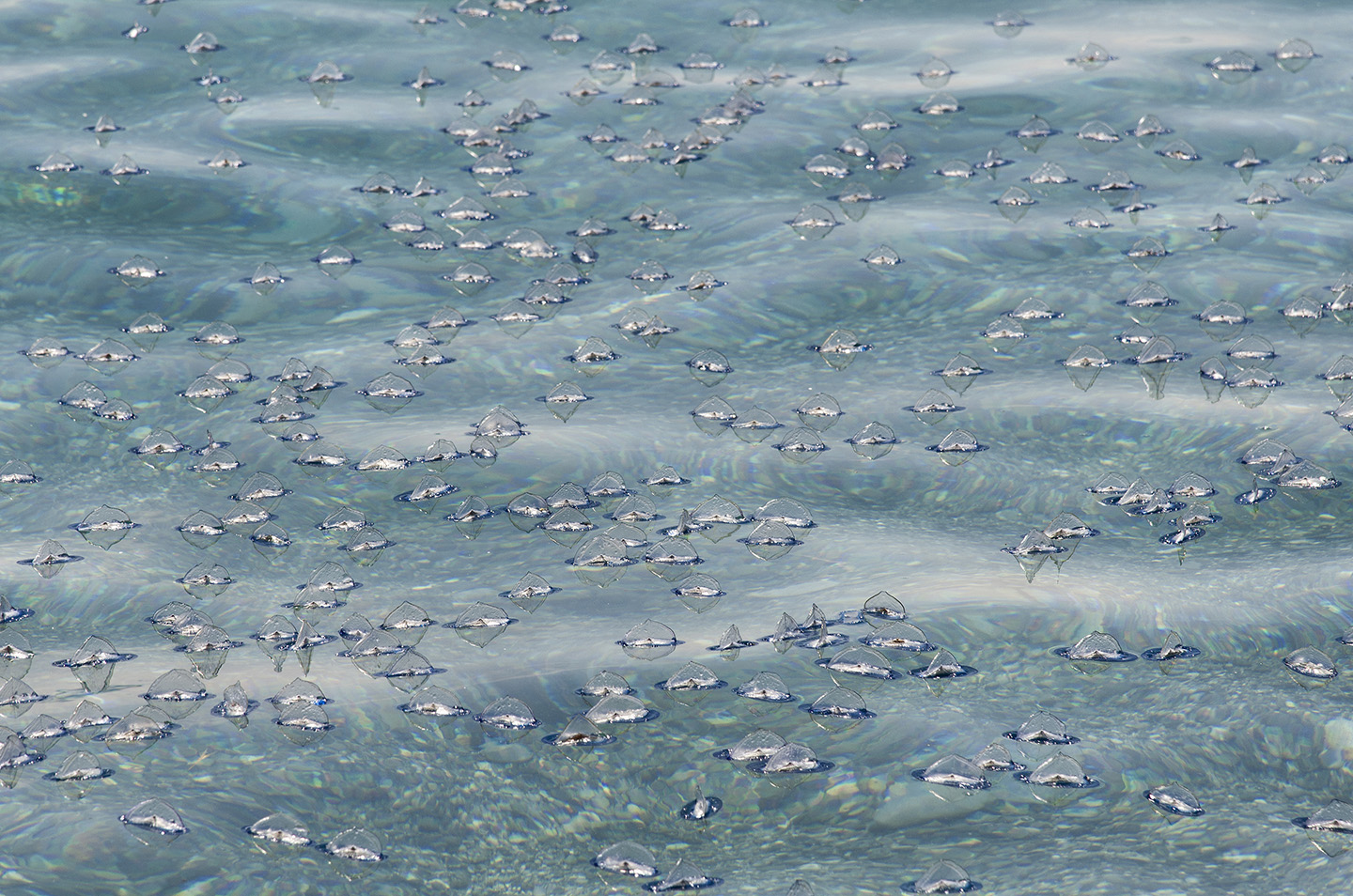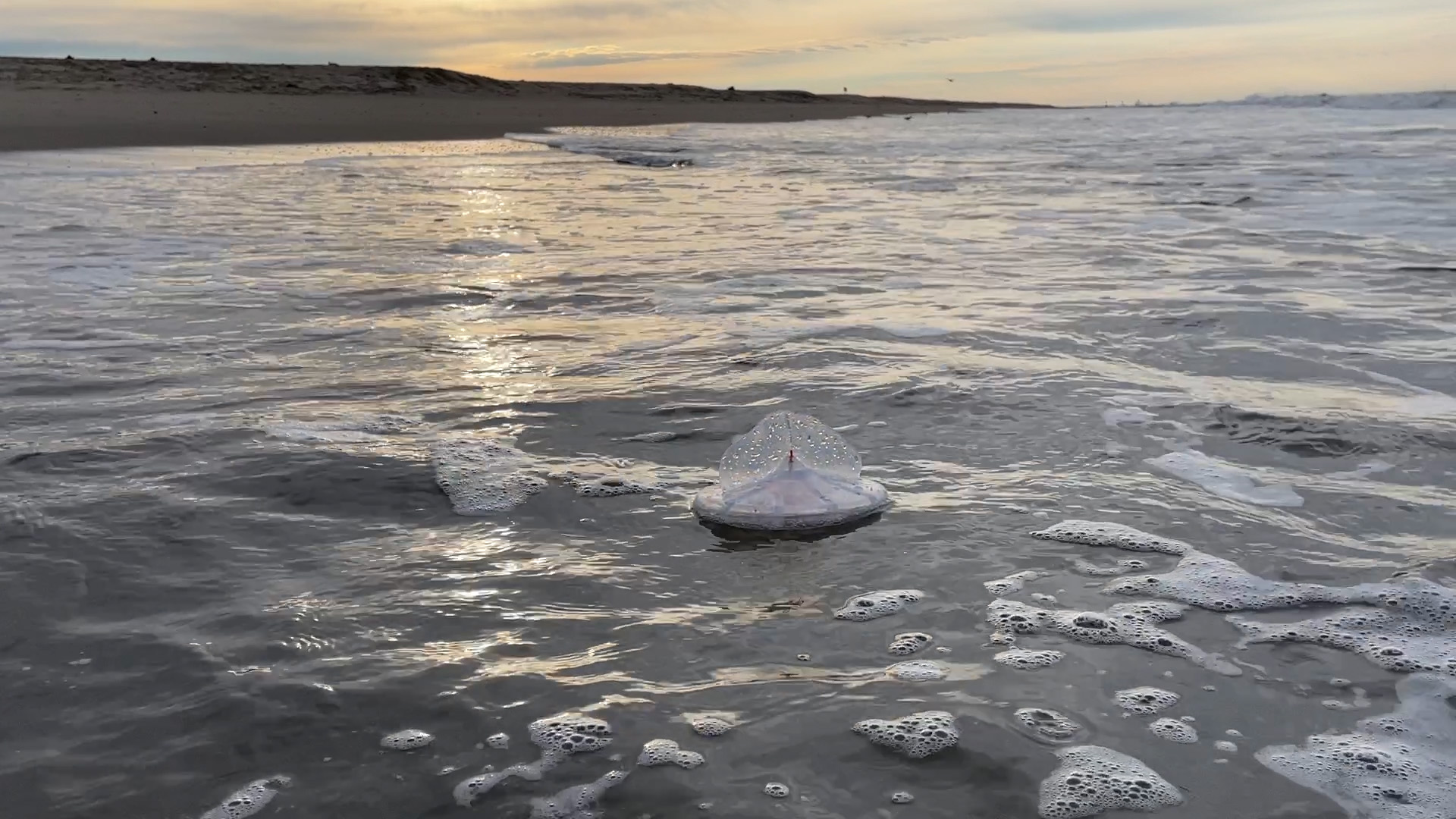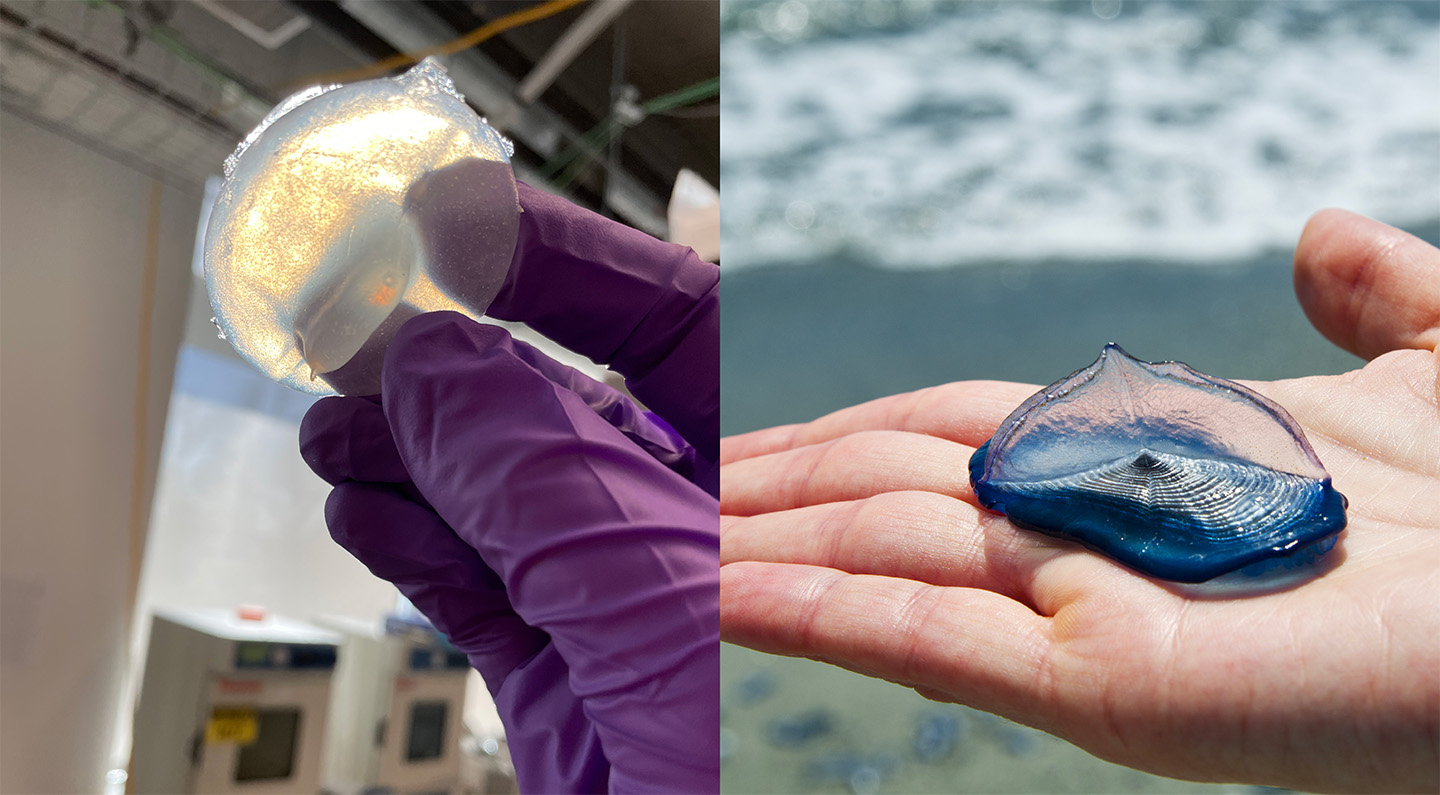Press Release
Inspired by Jellyfish, Johns Hopkins APL Researchers Float a Versatile Sensor Platform
Using a design inspired by one of the ocean’s best sailors, a team of scientists at the Johns Hopkins Applied Physics Laboratory (APL) in Laurel, Maryland, is developing a versatile, low-cost sensor for ocean observations. The APL-designed sensors are modeled after Velella velella, which are floating jellyfish-like organisms that sail across the surface of the ocean.
The new sensor platforms, which were developed with support from the Office of Naval Research and in collaboration with the Naval Postgraduate School and a small local aerospace electrical engineering company, incorporate advanced low-power electronics that can measure key oceanic factors, such as salinity, temperature and position. The collected data is then transmitted to researchers using satellite communication for real-time global monitoring.
“We’ve started deploying these [platforms] with salinity sensors because salinity is one of the more difficult oceanographic measurements to measure precisely,” said Daniel Ayoub, an electrical engineer in the Research and Exploratory Development Department (REDD).
Historically, ships and buoys were used to capture salinity data, but recent space missions like NASA’s Aquarius satellite collected more data in its first few months than had been collected by ships and buoys throughout the previous century. Even though satellites are capable of capturing data from large portions of the ocean quickly, data from buoys and in-water sensors, such as the Velella sensors, provides localized, high-resolution readings. Each set is useful for varying research needs, and when combined, create a more complete understanding of the ocean.
Salt makes water denser, and while surface water circulation is driven primarily by surface winds, changes in seawater density and temperature drive ocean currents deep below the surface. Global ocean circulation models suggest that these density-driven deep currents play a significant role in mediating our planet’s climate, as well as ocean nutrient and carbon dioxide cycles.
“If we can better monitor ocean health and how environments around the world are changing, then we can make better decisions on how to mitigate or adapt to those changes,” said Leslie Hamilton, a materials science engineer and Science of Extreme and Multifunctional Materials assistant program manager.


